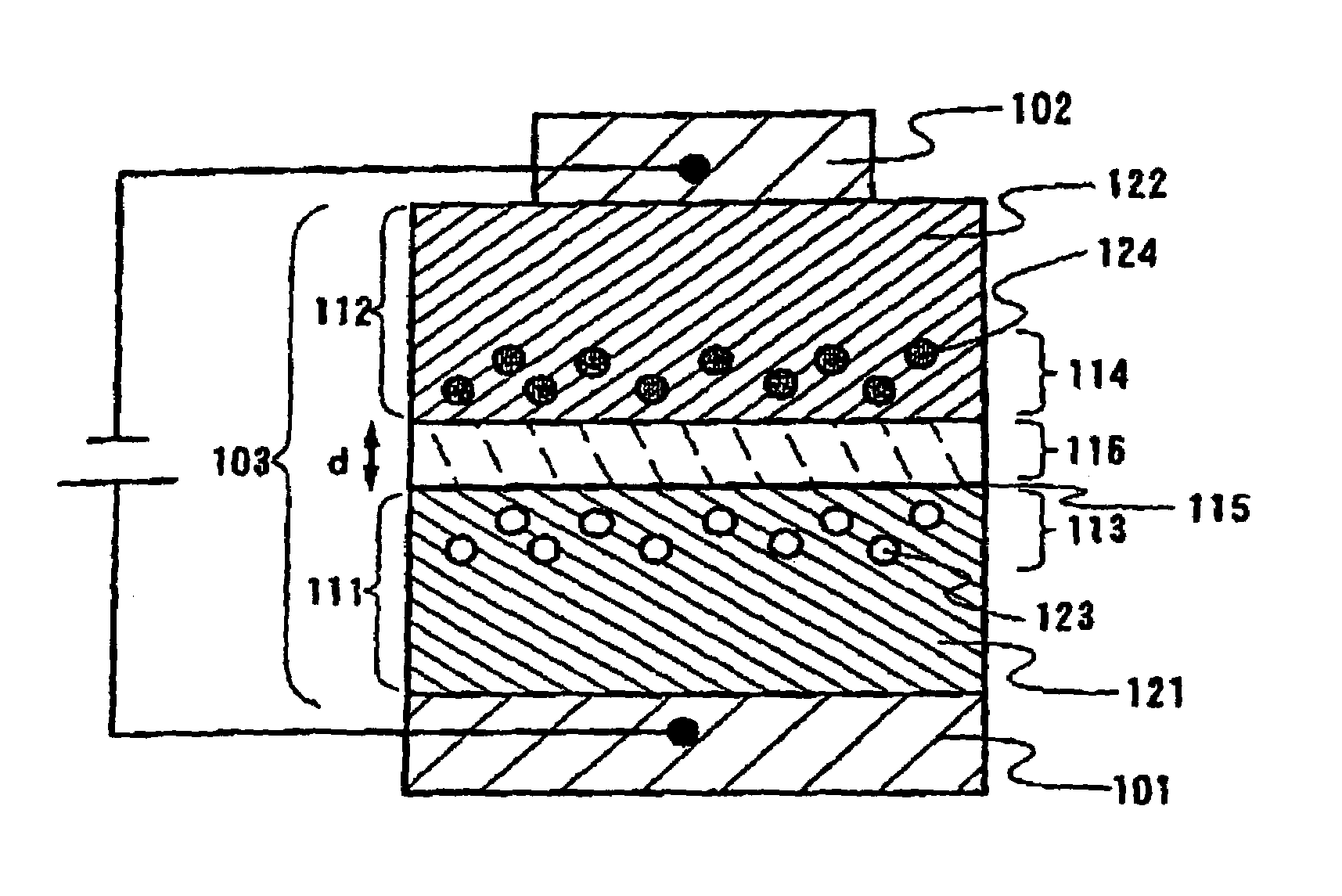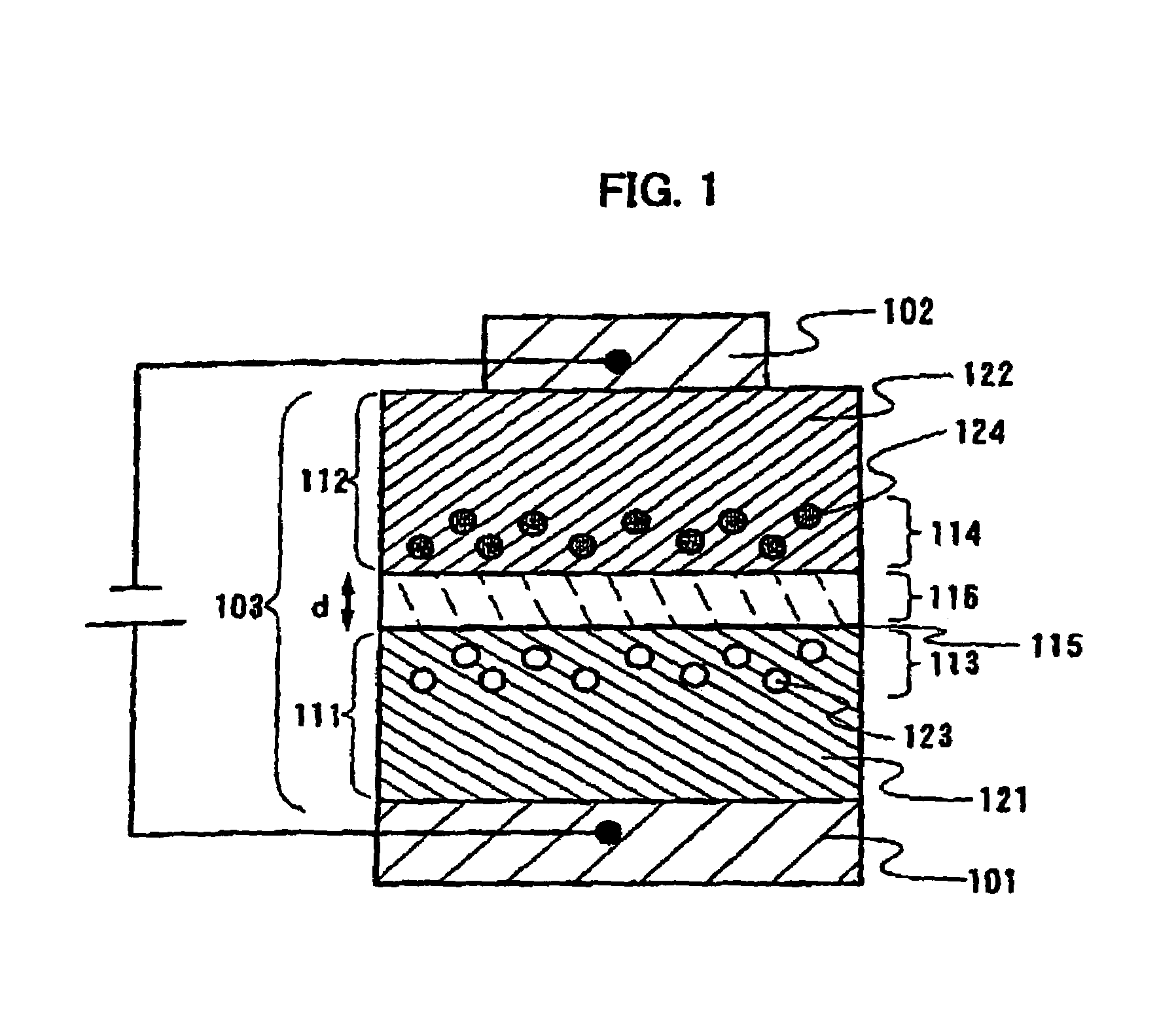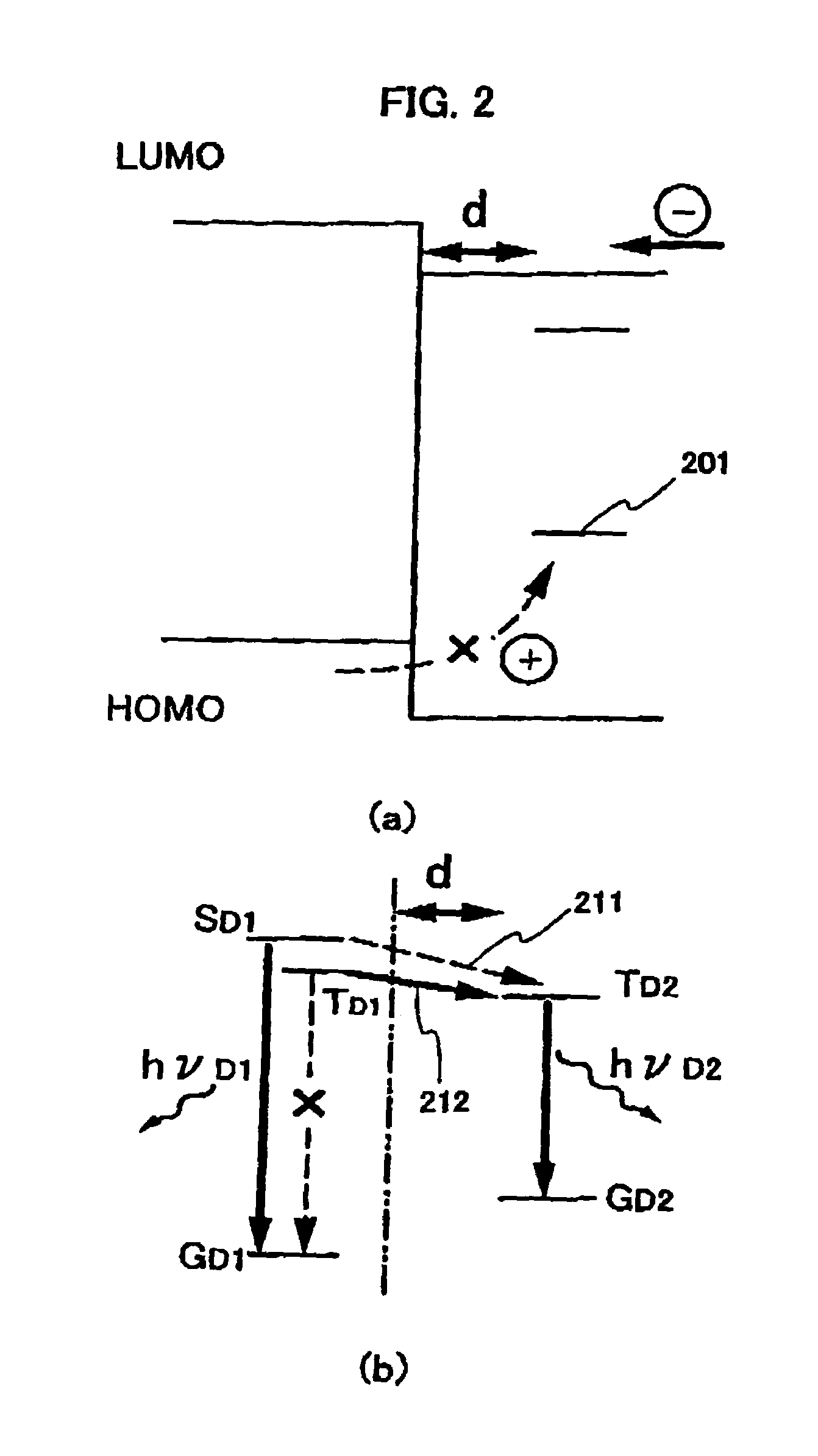Organic light emitting element and a light emitting device using the same
a light emitting element and light emitting device technology, applied in the direction of discharge tube luminescnet screens, discharge tube/lamp details, electric discharge lamps, etc., can solve the problems of poor color conversion efficiency of blue to red in principle, unnecessary back light used for the conventional liquid crystal display device, and deterioration of contrast, etc., to achieve high light emission efficiency, low power consumption, and high efficiency
- Summary
- Abstract
- Description
- Claims
- Application Information
AI Technical Summary
Benefits of technology
Problems solved by technology
Method used
Image
Examples
example 1
[0091]In the present example, an organic light-emitting element according to the invention and having a gap layer thickness d of 10 nm will be specifically illustrated with reference to FIG. 3. In FIG. 3, reference numerals 301, 302 and 303, respectively, denote an anode, a cathode and an electroluminescent layer.
[0092]Firstly, on a glass substrate on which ITO that is an anode 301 was deposited with a thickness of substantially 100 nm, CuPc that is a hole transport material was deposited with a thickness of 20 nm, and thereby a hole injection layer 310 was formed. Subsequently, α-NPD that is a hole transport material was deposited with a thickness of 30 nm, and thereby a hole transport layer 311 was formed. In the last 10 nm thereof, α-NPD (host material) and perylene (guest material) that is a singlet emission material were co-deposited so as to be substantially 99:1 in the ratio thereof (weight ratio). That is, at a concentration of substantially 1 weight percent, perylene is dis...
example 2
[0100]In the present example, an organic light-emitting element according to the invention and having a gap layer thickness d of 20 nm will be specifically illustrated with reference to FIG. 3.
[0101]Firstly, the first emission region 313 is formed similarly to example 1. After the first emission region 313 is formed, BAlq that is a hole block material (and an electron transport material) was deposited with a thickness of 20 nm and thereby a gap layer 316 was formed. BAlq was further deposited with a thickness of 20 nm as an electron transport layer 312. In the first 10 nm thereof, a region to which a phosphorescent material PtOEP was added was co-deposited to form. An addition amount was controlled so that in BAlq PtOEP may be dispersed at a concentration of substantially 7.5 weight percent. This becomes a second emission region 314. Thus, a layer that uses BAlq becomes in sum total 40 nm in combination of the gap layer 316 and the electron transport layer 312.
[0102]In the next plac...
example 3
[0107]In the present example, an organic light-emitting element according to the invention and having a gap layer thickness d of 30 nm will be specifically illustrated with reference to FIG. 3.
[0108]Firstly, the first emission region 313 is formed similarly to examples 1 and 2. After the first emission region 313 was formed, BAlq that is a hole block material (and an electron transport material) was deposited with a thickness of 30 nm, and thereby a gap layer 316 was formed. Furthermore, as a second emission region 314, a region where a phosphorescent material PtOEP was added to BAlq was co-deposited with a thickness of 10 nm. An addition amount was controlled so that in BAlq PtOEP may be dispersed at a concentration of substantially 7.5 weight percent. Thus, a layer that uses BAlq becomes in sum total 40 nm in combination of the gap layer 316 and the second emission region 314. In the example, after the second emission region 314, BAlq is not further formed as an electron transport...
PUM
 Login to View More
Login to View More Abstract
Description
Claims
Application Information
 Login to View More
Login to View More - R&D
- Intellectual Property
- Life Sciences
- Materials
- Tech Scout
- Unparalleled Data Quality
- Higher Quality Content
- 60% Fewer Hallucinations
Browse by: Latest US Patents, China's latest patents, Technical Efficacy Thesaurus, Application Domain, Technology Topic, Popular Technical Reports.
© 2025 PatSnap. All rights reserved.Legal|Privacy policy|Modern Slavery Act Transparency Statement|Sitemap|About US| Contact US: help@patsnap.com



